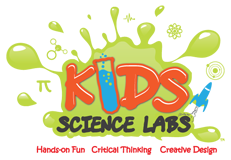Our kids love pancakes. From mixing in the bowl to pouring the syrup, they just seem to love eating these delicious creations of breakfast fame. But, what's funny, is that the entire process of making to eating pancakes, is ALL SCIENCE!
Just think about it. Measuring ingredients and ensuring you get the right amounts, allows you to teach your kids about science. Whether the eggs mix with the cinammon or milk, is science. Even the heating is science as if you turn the skillet up to high, you can burn the exterior of the pancake, while leaving the inside moist and uncooked, which is never good. So let me explain one new word to use in preparation, that is not only fun to say for kids, but is one of the coolest science concepts around.
VISCOSITY! It represents the thickness of a liquid. Some pancake mixes are very thick (highly viscous) because we put too little milk, water or other liquids in the mixture, while others are quite thin (low viscosity). My kids (ages 2 and 7) like making three bowls of pancakes, with different amounts of milk, and then mixing them and talking about the texture while using the word VISCOSITY. It has helped them to apply a science word to other things in our refrigerator, like Butter (high viscosity), Jam (high viscosity), Fat Free milk (low viscosity), Apple Juice (low viscosity). We take these liquids and pour them into bowls and see that the ones that move very slowly, because of their thickness, have high viscosity. Try this experiment with your kids at home the next time you are making pancakes, whether you use VISCOSITY or not, it is great to actually allow them to make a mixture over a towel, and talk about why one is different than the other. Then cook the mixtures and observe what happens. Kids learn by doing, and this experiment is so simple that even a toddler can get involved. Enjoy!
